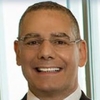Software Patents: Enablement, Definiteness, Means Plus Function, Step Plus Function, On Sale, Public Use

Welcome! Strafford is now BARBRI! The expert courses you know from the trusted global leader in legal education.
Course Details
- smart_display Format
On-Demand
- signal_cellular_alt Difficulty Level
- work Practice Area
Patent
- event Date
Thursday, March 12, 2020
- schedule Time
1:00 p.m. ET./10:00 a.m. PT
- timer Program Length
90 minutes
-
This 90-minute webinar is eligible in most states for 1.5 CLE credits.
-
Live Online
On Demand
This CLE course will provide patent counsel with guidance on software patents and the issues of enablement, definiteness, means plus function and step plus function, on sale, and public use. The panel will review key Federal Circuit cases, the USPTO guidelines and PTAB decisions, and will offer best practices for satisfying the statutory requirements.
Faculty

Dr. Chen provides strategic patent counseling services, manages portfolios of patents and patent applications, helps clients develop strategies for building patent portfolios, helps clients identify patentable inventions, and prepares and prosecutes patent applications, both in the U.S. and internationally. She covers a wide range of computer-related technologies. She has substantial patent experience in distributed system architectures, Internet and client-server systems, search engines, cloud architectures and applications, anti-virus and data encryption techniques, telecommunications, medical devices, automobiles and mechanical devices.

Mr. Kiklis focuses on PTAB litigation as well as district court patent litigation. He also handles Federal Circuit appeals from his cases. With an extensive background in computer science, his technological focus is on software patent matters. Mr. Kiklis frequently handles high stakes matters, having been involved in several cases in which over $1 billion was at stake.
Description
Software inventions face some challenging issues from § 112, including written description, enablement, definiteness, means plus function, and step plus function. For example, computer-implemented functional claim limitations may invoke § 112(f) when claiming a “means” or “step” for performing a function without reciting the specific structure, material, or acts that perform the function. When § 112(f) is invoked, the Federal Circuit has consistently required that the specification must disclose an algorithm for performing the claimed function. Failure to do so may render the claim invalid.
The circumstances under which a software claim invokes § 112(f) has evolved. In 2015, the Federal Circuit’s Williamson decision eliminated the heightened presumption against applicability of § 112(f) when the claim limitation lacks the word “means.” Also, in January 2019, the USPTO issued § 112(f) guidance. And, in June 2019, the Senate Judiciary Committee’s Subcommittee on Intellectual Property heard testimony regarding a draft bill that would, among other things, expand the applicability of § 112(f) by eliminating the current “means” language, which proponents have argued will rein in overbroad claims. Accordingly, § 112(f) will continue for the foreseeable future to impact applicants in prosecution as well as patent owners in post-grant proceedings and litigation. Knowing when claims may invoke § 112(f) is critical to avoid a narrow construction or, worse, invalidity.
Further, the on-sale and public use bars raise unique issues for software inventions. Patent counsel must understand how these bars are applied to software.
Listen as our authoritative panel of patent attorneys discusses software patents and the issues of enablement, definiteness, means plus function, step plus function, the on sale bar, and the public use bar. The panel will review key Federal Circuit cases, the USPTO guidelines, and PTAB decisions and provide practical advice.
Outline
- Meeting enablement requirements
- Meeting definiteness requirements
- Means plus function and step plush function
- On sale bar
- Public use bar
- Best practices for software patent prosecution
Benefits
The panel will review these and other noteworthy issues:
- How will claims invoke § 112(f) and what are the benefits and pitfalls of using means-plus-function or step-plus-function software patent claims?
- What steps can patent counsel take to meet the enablement requirement and withstand invalidity/unpatentability challenges based on written description and enablement?
- How are courts and the PTAB treating the on-sale bar and the public-use bar for software patents?
Unlimited access to premium CLE courses:
- Annual access
- Available live and on-demand
- Best for attorneys and legal professionals
Unlimited access to premium CPE courses.:
- Annual access
- Available live and on-demand
- Best for CPAs and tax professionals
Unlimited access to premium CLE, CPE, Professional Skills and Practice-Ready courses.:
- Annual access
- Available live and on-demand
- Best for legal, accounting, and tax professionals
Unlimited access to Professional Skills and Practice-Ready courses:
- Annual access
- Available on-demand
- Best for new attorneys
